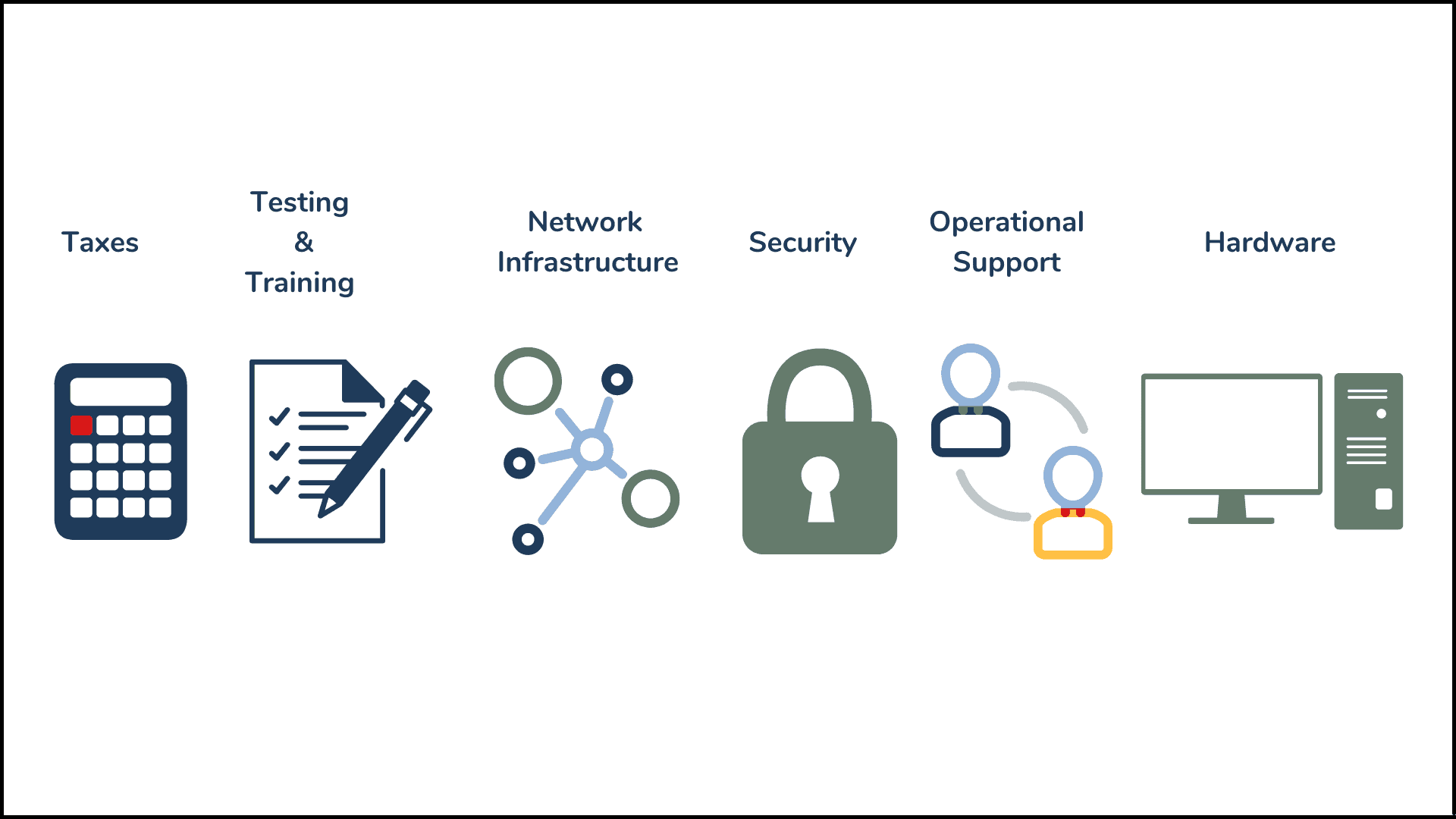First off, let’s note that no one just “buys IT”. That’s a laughable oversimplification. No one just walks into Best Buy and buys a new CCaaS solution after chatting to a Geek Squad member for 15 minutes.
If only it were that simple.
A corporate IT purchase is a process, one that involves many steps and even more people. In our experience, though, the big picture view shows us that there are roughly five stages that buying committees go through. It’s not a linear process, going from one stage to the next, culminating in a neatly finished, new IT solution. These stages are interconnected – info uncovered in one of the stages might cause you to review and revise stages you’ve already completed.
In these five main stages, there’s typically one big hurdle that causes most issues. These big hurdles are where a third party can really help.
Stage: Problem Identification
You have a problem. At first, you don’t know what the exact problem is, but you know something needs to be done to solve it.
Identifying this problem is just the tip of the iceberg. You see the tip looming out of the water, but you have no idea how deep it goes under the water. Is this a problem small, something easily solvable? Or is it big enough to sink the metaphorical Titanic?
At the beginning of your buying process, there’s excitement. Everyone knows about your iceberg problem, and everyone knows a change is needed. However, the problem is always bigger than anyone thinks. And just like a real iceberg, you can’t see just how big it is. IT ecosystems are all interdependent, and a problem with one solution could affect many others. As your original problem grows and grows in scope and seriousness, it can be demoralizing.
The biggest hurdle companies face in this stage lies in clearly articulating business problems and their technical solutions. CX leaders, C-Suite Execs, Network Admins – everyone is guessing on how deep the iceberg goes.
Stage: Solution Exploration
According to Forrester, there were roughly 150,000 B2B SaaS companies in the market. By 2023, they expect that number to hit 1,000,000.
Nearly 1,000,000 different companies, and somehow, you need to choose the right one for you and your company.
On top of that, Gartner research shows that on average, there are six members in a typical buying committee. Each of these members compiles information from an average of eight sources – online resources, expert opinions, personal and peer experiences – as they research solutions. That means when the average buying committee meets to discuss a purchase, they will have a minimum of 48 input sources to help them plan.
Gartner also found that 44% of millennials prefer a completely sales-rep-free environment when buying technology. Even before the pandemic, B2B buyers were already conducting over 80% of their research prior to engaging with a sales rep.
The biggest hurdle in this stage is a buying committee’s inability to understand the marketplace. The sheer number of SaaS companies and the disorganized self-serve research practices mean that many companies get overwhelmed by the number of potential vendors. And when they get overwhelmed, projects slow down or stop entirely.
Stage: Building Requirements
You think you know exactly what you want to buy. But then you start talking to vendors.
You start comparing your current state to different future states. Every stakeholder and business leader in your org has a different opinion about what’s best. Any research you do just makes the new solution more and more complicated.
Building requirements are always, and we mean ALWAYS, more labor-intensive and time-consuming than everyone thinks. You need to build alignment on more than just the technology – your company needs to be aligned on impacts, business goals, change management, and budgets.
Another overlooked piece of the Requirements stage: understanding what your employees want. The agents who use a CCaaS solution on a day-to-day basis may not be on the buying committee, but they have valuable insight into what works and what doesn’t. Taking the time to learn about how real people use your technology helps you build a better solution.
The biggest hurdle companies face in this stage is gathering all the data necessary to make a smart list of requirements. By failing here, people build requirements lists without truly understanding what they need.
Stage: Vendor Selection
You’ve designed your solution, sent out an RFP, and narrowed down your list of possible vendors.
You’re almost done!
Now you just need to:
- validate the technical design options
- compare and negotiate contracts
- build an implementation plan
- understand steady-state roles and responsibilities
- navigate contract signatures
Easy enough, right?
The vendor selection stage is one giant hurdle in a process full of them. During the final vendor selection, there are a lot of moving parts. These moving parts can cause friction between you and your new vendor. If you don’t understand their process (Or vice versa), it can lead to a rocky start to your new technology.
Stage: Deployment and Adoption
This stage is like riding a bike up a hill, but the tires are flat, and the bike is on fire. You can get to the top of the hill! It’s just going to be painful and take longer than you anticipated.
The buying process doesn’t end at the contract signature – it’s not that easy. During the deployment, all your previous decisions and work are put to the test. Did you do your due diligence correctly? Did you pick the right vendor? Did you make a culture map? Did you make a strong enough implementation plan?
There are several hurdles to overcome in this stage.
- Planning: Without a robust implementation plan, you’ll miss deadlines and face difficulty in hitting your milestones, meeting your projections, and getting your new solution off the ground.
- Vendor Misalignment: If you and the vendor aren’t fully aligned on your project plan, critical tasks won’t get done. And even worse, resentment could start to grow between your company and your new technology partner.
- Issue Management: No implementation is perfect. How do you manage toward your goal when you’re putting out the inevitable fires that arise on any technical implementation?
- Task assignment and accountability: there are lots of simultaneous steps in this stage. Ensuring everyone has clear and detailed instructions as well as benchmarks to keep moving the project forward in a timely manner.
- Adoption: Employees can be adverse and feel threatened by change because of the lack of communication from leadership about the new technology. If they had no say in the process, they will not understand the overall benefits and how the new technology might empower them. Change management planning is critical.
- Transition to Steady State: Congrats, your new solution went live! But how do you address the host of open issues from the implementation? How do you make changes to your solution as your business needs to change? Who is responsible for what now that the implementation team has rolled off the project? What does the vendor do, and what are you responsible for on your own?
How Does a Third-Party Help?
Do you see all those problems we just listed? We’ve solved them before.
We’ve been involved at every stage of the buying process, helping clients clear hurdles. As a third party, we act to fill the gaps in your org chart, accentuating your strengths and shoring up your weaknesses.
The key takeaway: it’s never the wrong time to explore a third party.
What can CXponent do for me?
No matter where you are in the buying process, we can give you the information and expertise you need to buy with confidence. We work with you to develop a custom SOW that meets your needs, rather than sticking with you with a rigid template SOW. From the very beginnings of problem identification to the steady-state transition, we work with your team to help you clear all the hurdles on your way to a new IT purchase.


.png)



